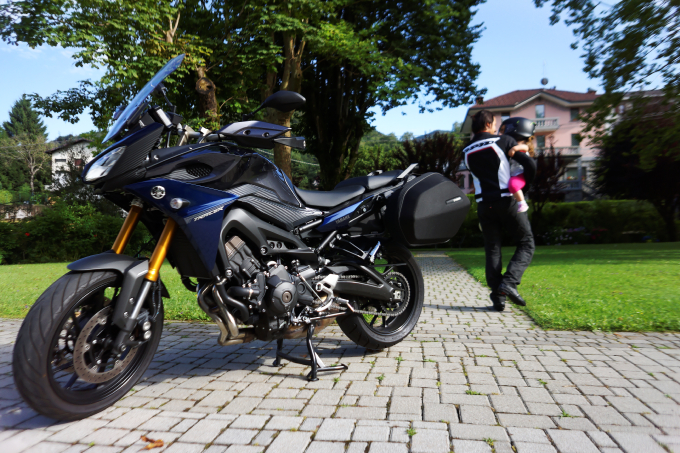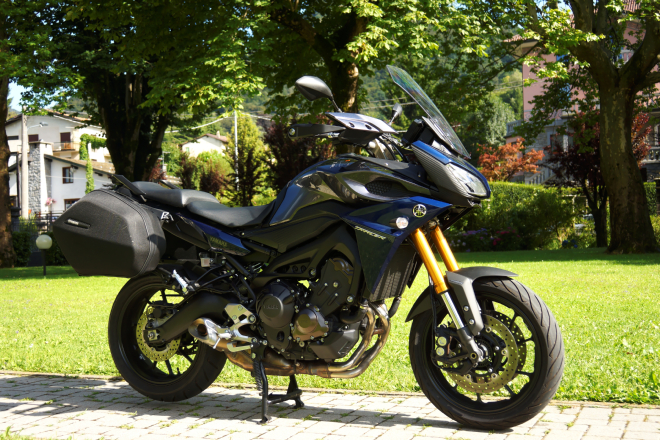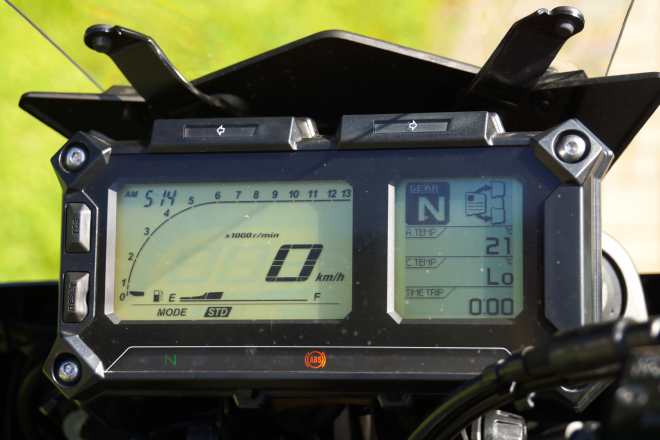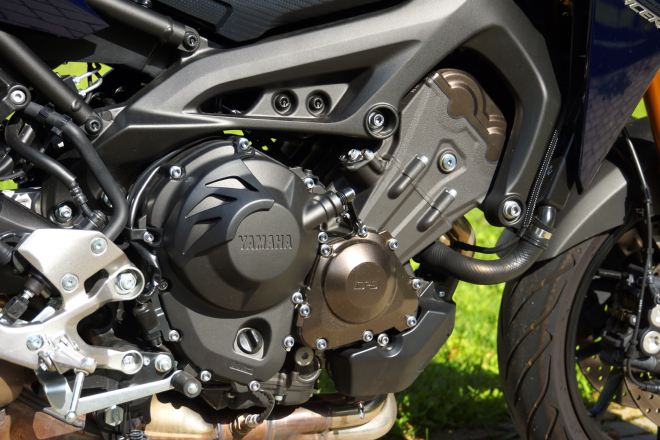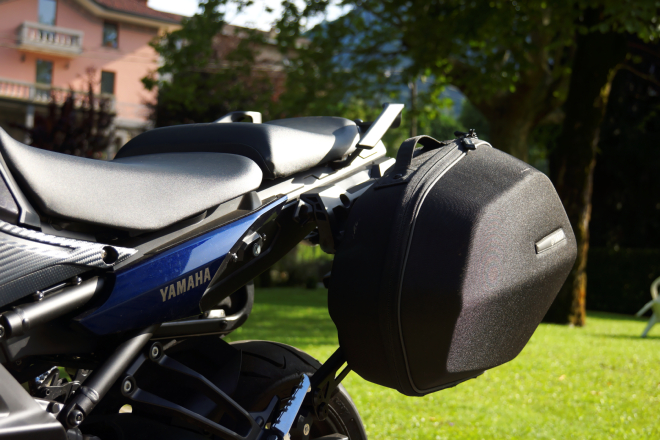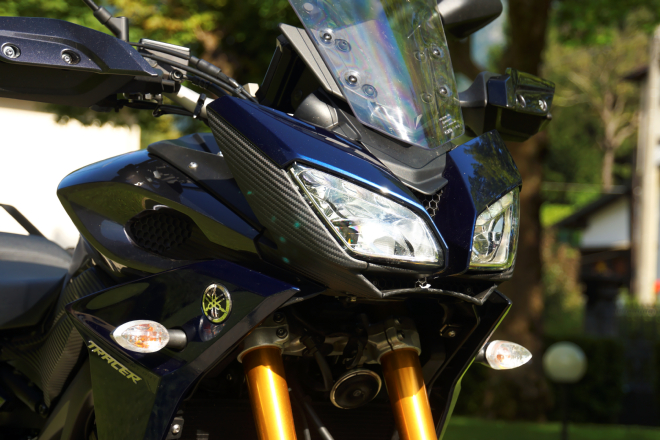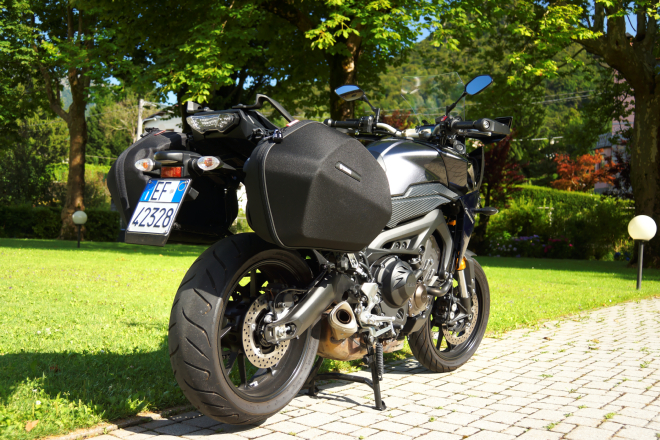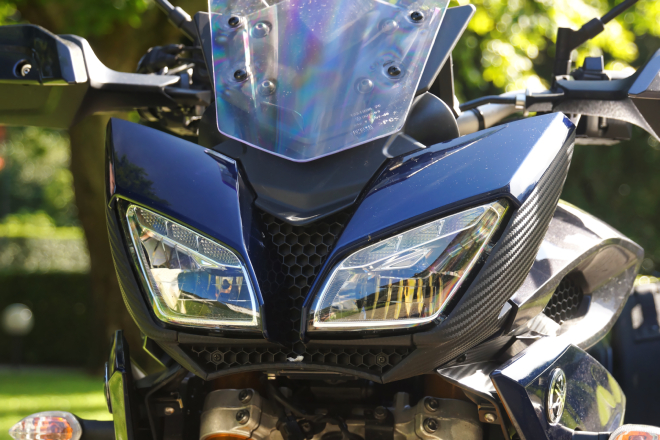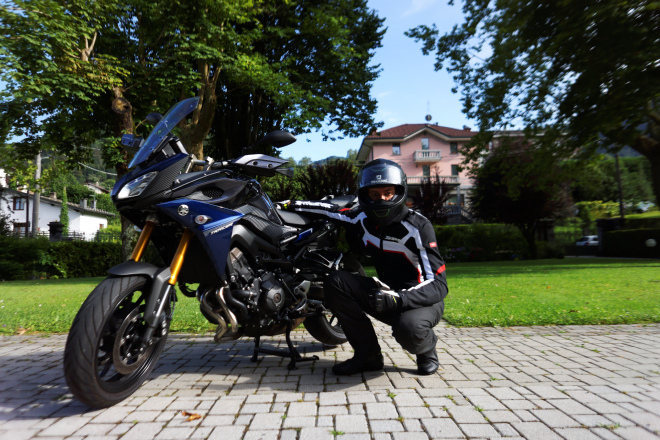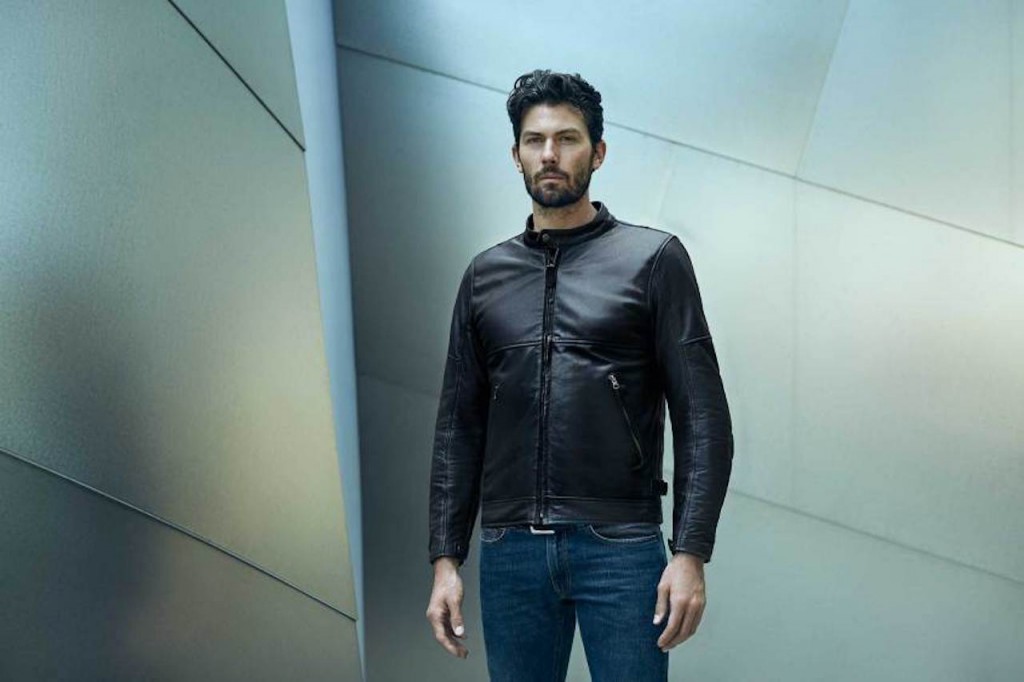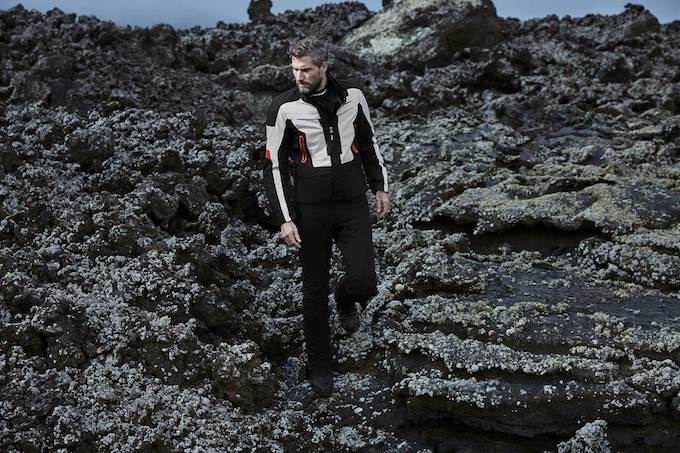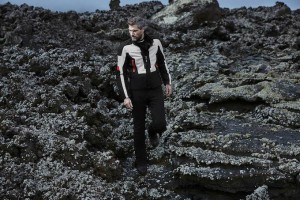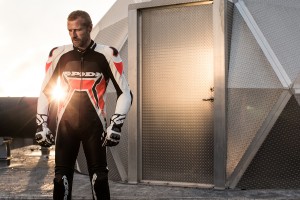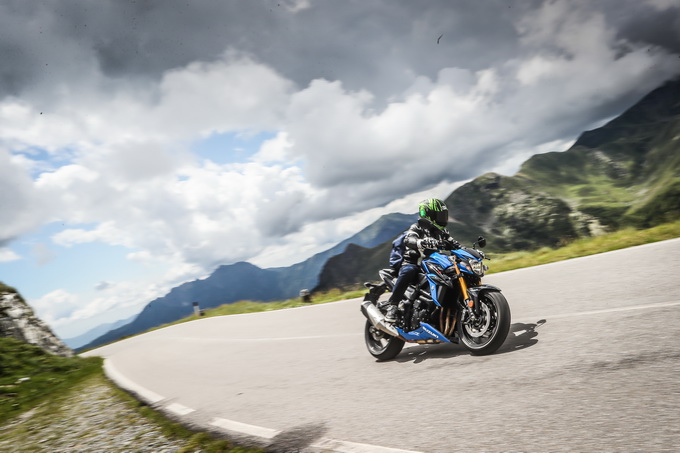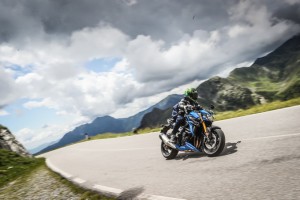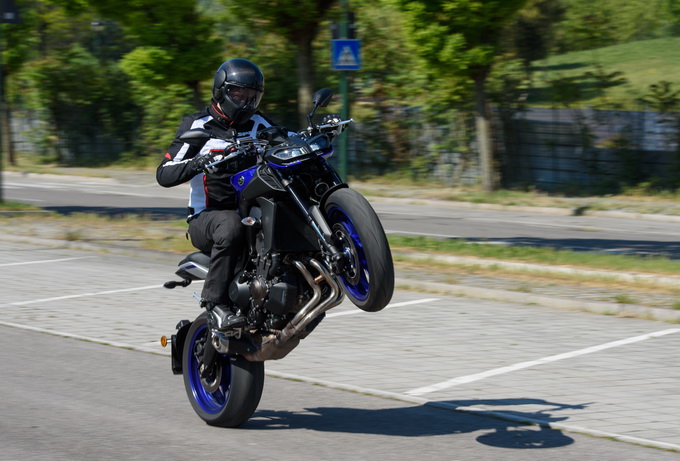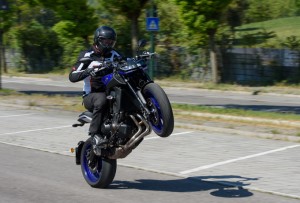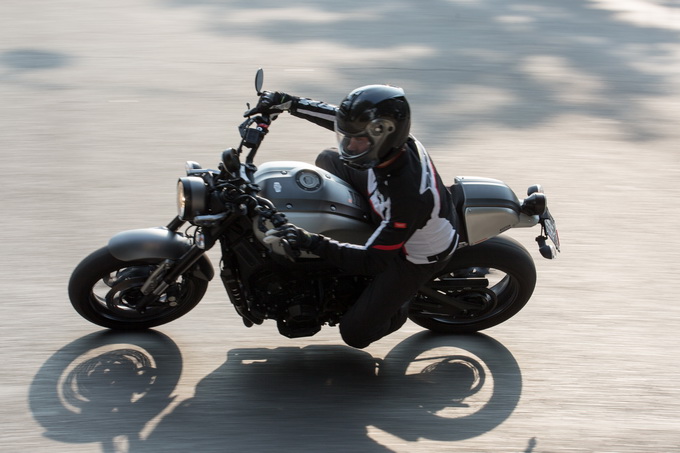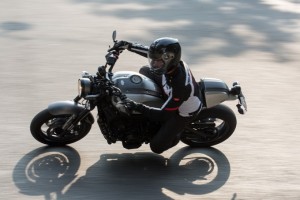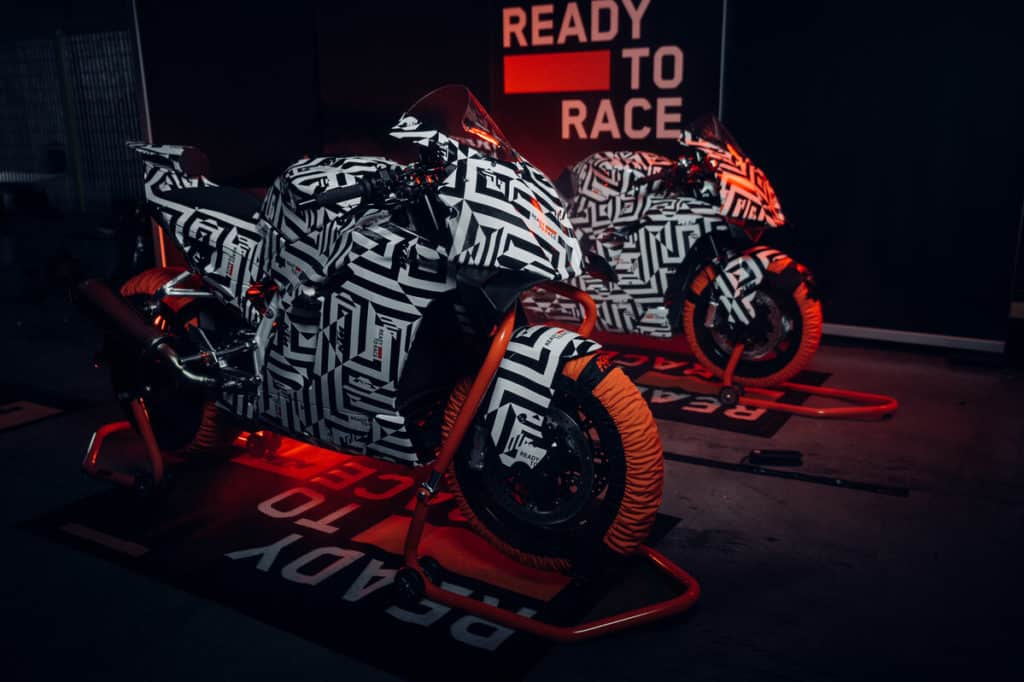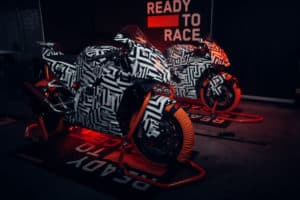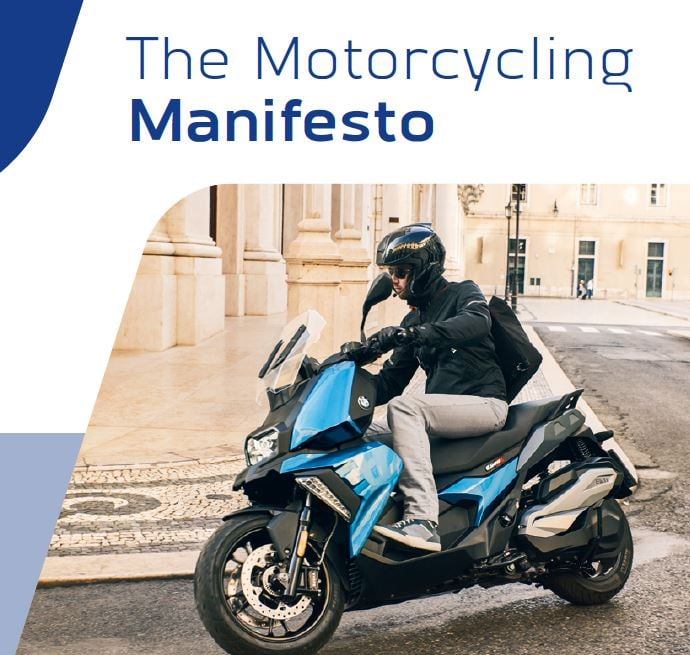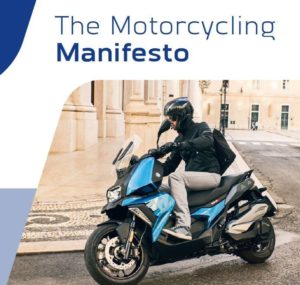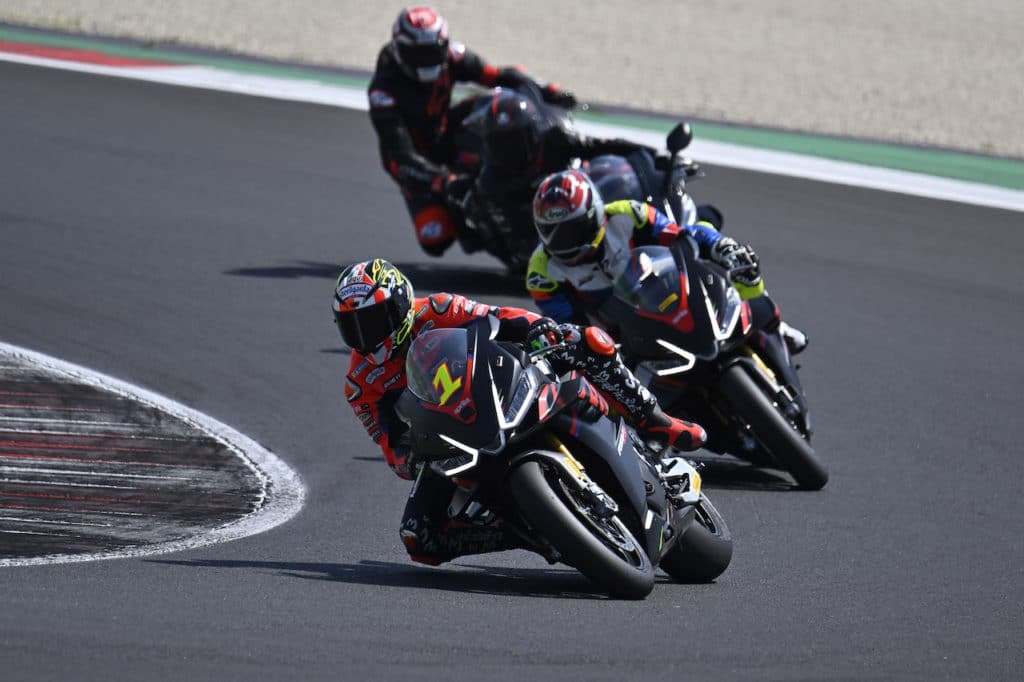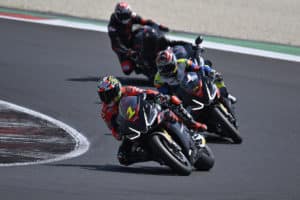Yamaha MT-09 Tracer, the funbike that becomes practical [ROAD TEST]
From the MT-09 comes a versatile crossover that can excite
Yamaha MT-09 Tracer – We were missing, despite having been one of the best-selling models in its debut season. In fact, last year we weren't able to try it. Before trying the sister 700 which debuts this year, we therefore wanted to make up for the absence. It is about the"intelligent" expansion of a range, that of the MT family, which is enjoying great success. Personal tastes aside, Yamaha has objectively been hitting the mark for a couple of years with all the MTs and derivatives, in the 2- and 3-cylinder variants, with the retro look (here is our test of the XSR 700), or from crossovers and now with the very sporty 4-cylinder MT-10 derived from the R1. The MT family is gaining market share and success due above all to a truly noteworthy price/fun ratio, aiming for essentiality from certain points of view, but paying close attention to the matter. If the naked ones are perfect for having fun, they are however impractical for those who also do long-distance touring with their motorbike, or are simply looking for the practicality of a pair of bags that do not clash with the general look, to store a helmet and objects with which we move on a daily basis. This is where the Tracer was born, a pure crossover, because under the skin it remains almost entirely identical to a standard MT-09 (with which it shares 70% of its members), but gains a more comfortable and separate saddle for the passenger, superstructures suitable to offer a aerodynamic protection and the possibility of housing the semi-rigid bags that you see mounted on the sample we tested. They also make an appearance multifunctional instrumentation (borrowed from Super Tènèrè) and the traction control, to complete the transition to a true tourer. In this key it then gains in terms of autonomy thanks to the 18 liters of the new tank. If you expect a different character from the Tracer, however, you will be surprised by trying it. The funbike soul is only blunted (in our opinion this makes it more pleasant to drive even at the limit, where it is less hysterical), because it remains great fun and with a vocation for single-wheel vehicles which never hurts (however, from this point of view, the inconvenient traction control is terrible to be excluded and reactivated). A perfect motorbike doesn't exist, there are too many variables and differences in everyone's needs, but the Tracer is a compromise choice (being a crossover is this), truly apt, moreover at a very attractive price just under 10 thousand euros , which gives it a substantial advantage over the competition.
Aesthetics and finishes:
rating: 
Less essential and more refined than the MT-09, as well as being practical, it has a more mature look
You look at it and you hardly think about the basis from which it derives. Mostly the front part changes completely, Thanks to all new dress. Of the essential MT-09 it retains only the mudguard, as well as the chassis, which we will see is in fact identical. Headlight and instruments, around which the crossover version could have been developed, were instead abandoned, preferring to start almost from scratch. Buy like this an optical unit with double full LED element, within a angular and aggressive fairing, without exaggerating the concept. In the upper part, obligatory for its tourist vocation, a windshield adjustable to three positions, thanks to the two wheels positioned so as to be easily accessible even while remaining in the saddle. In this area the choice of is a little surprising replace the instrumentation of the MT-09 with the totally different one of the latest Super Tènèrè. It is a square double display, with many data visible and partly navigable with the rocker buttons on the left side of the handlebar. There is no shortage of those for average and instantaneous consumption, while the two buttons on the left of the instrumentation are used to reset the partials and deactivate the traction control.
Hidden, but conveniently positioned for its use, we also find one 12 volt socket, always positioned on the left. Once we got into the saddle we discovered some news and some surprises. The change in relation to the is very evident longer and wider rear subframe. The improvements in terms of comfort are clear for the passenger, to whom a separate portion of the saddle is dedicated, a little less so for the driver, but we will talk about this in detail later. The tank in front of you is bigger and hugged at the front by the fairing. It gains 4 liters, going from 14 to 18. THE handguards, appreciable in use thanks to an always welcome protection from air and water, are a little heavy from a stylistic point of view. You notice it less when walking around the bike, where the aggressive look with those very taut lines is mainly highlighted, more so when you are on the bike and can see its structure better, which is quite complex and has a lot of (too much) plastic.
Moving on to side and rear area of the Tracer 900 the link with the MT-09 is more evident. The lower part is in fact absolutely identical, swingarm included. The new subframe with the wider saddle is combined with a solution that offers a comfortable grip thanks to the passenger grab handles. The support structure of the side bags is partially integrated, which still require two frames, but which in this context are more aesthetically pleasing than on an MT-09. Good idea to adopt semi-rigid bags (they are optional), then equipped with waterproof internal bags. They are light, both physically and in appearance, quite roomy and do not take up much space beyond the shape of the handlebar. Overall the Tracer appears discreetly refined and even more pleasant than the MT-09 from some points of view. It is not poor, even if some plastics are not at the top in quality, with the charm of carbon-like parts. They are still pleasant even if not "real" and overall give a sporty and original look to the bike.
Engine and performance:
rating: 
He improves in his delivery, confirms his good character and earns the TCS
The Tracer 900 inherits (of course it wasn't the case) the 3-cylinder crossplane (hence the name CP3) from the MT-09. Here too we find the three “D-mode” mappings, with the standard one flanked by a sweeter one and a more aggressive one. The big news, besides the appearance of traction control, is that however the electronics have been totally revised. The Tracer wants to be softer, even if it maintains much of the pleasant impetuosity in delivery, but the annoying "on-off" disappears, which was far too abrupt in the first MT-09s. It no longer warns even when using "A" mode, the most aggressive of the 3. The great character of the 3-cylinder is confirmed crossplane shaft (with irregular bursts, a concept borrowed from the engine of Valentino Rossi's M1 or, if you prefer, the R1). It is an 850 (more precisely 847 cc), even if we are talking about Tracer 900, which delivers 115 horsepower at 10 rpm and 87,5 Nm at 8.500. It has a nice progression, which starts from low revs and becomes almost aggressive from 7 rpm onwards. With the new electronics it has become more fluid and less angry, in tune with the tourist character of the Tracer, but absolutely improving, so much so that we prefer it here than on the MT-09, not only for the on-off issue. He still has a great deal of aggression left, in fact when he gets into a pair he raises the front with extreme ease, to traction control turned off.
His vocation to play with this is mitigated precisely by TCS which the Tracer is equipped with as standard. For many, this will change absolutely nothing, because it will never occur to them to take off the reins and do without the safety that traction control offers, but we found its deactivation system to be criticised. This is a control without intervention levels and which obviously also inhibits front wheeling, on which we can therefore only act on the exclusion button. Press for a few seconds, here comes the worst, necessarily with the bike stopped. This therefore translates into the de facto impossibility of being able to do so quickly and in a "safe" way, both to remove it and to reinsert it. If you want to enjoy one of the motorbikes best suited to playing with the front end floating in the air, but with the possibility of putting the "safety" back on when you manage to keep the hooligan inside you at bay, you have to stop, or even worse to keep the TCS off. Alternatively, by turning the ignition off and on again with the key, the control becomes active again, but it is not exactly the best solution. On the sidelines of our note, however, we must admit that the traction control is not invasive at all and its action is very good. The three-cylinder is not only fun but also excellent on the motorway and for long journeys it is not free from some vibrations when it turns in sixth gear at 130 km/h.
Ride and handling:
rating: 
More comfortable and less extreme than the MT-09, of which it retains much of the chassis
Between the lines the fact can only be seen that, in the transformation into a crossover, in our opinion some aspects that we didn't like too much about the MT-09 have been corrected. We talked about the more pleasant and fluid delivery of the CP3, but the Tracer is also more rounded and less nervous when driving. Riding position aside though it inherits the chassis and chassis of the naked model, with only some settings changed. Fine interventions which in practice have significant repercussions on driving. The most obvious changes concern the wide and adjustable handlebar, as are the saddle (845 or 860 mm), in addition to the presence of the fairing. The latter can be raised or lowered in a few moments with the two wheels in the area in front of the handlebars. In the highest one it offers decent aerodynamic protection. The handlebar, in addition to widening, also rises, thanks to the new supports with which it connects to the upper plate of the fork. For the rest the chassis is identical to the MT-09, except fork and shock absorber settings. A characteristic that makes the position in the saddle almost "strange", at least initially, at first we struggled to find the footrests because we were looking for them elsewhere, then we get used to it and everything is comfortable, including a position that it turns out to be natural and doesn't get tired even after driving for a long time. An exception is the saddle, which although it improves the seating compared to the MT-09 (where it represents one of the major defects of the bike), is still the source of some small criticism. The padding is greater, but you still get off with a sore backside, while it is made with a finish that does not allow you to slide as you would like to move between one curve and another and therefore requires legwork to get up. Small criticisms for a bike that instead deserves a lot of praise on the riding pleasure front. Credit also goes to a weight that places it at the top of the category, with only 210 kg in running order. We said that the MT-09, even in the Tracer model, remains a lover of single-wheelers, perhaps even more so than the naked here.
In the transition to crossover, we find a rather important difference in the calibration of the suspensions, which are now less firm. This leads to two consequences, one positive for us, with less nervous and more predictable behavior, the other instead negative, with the Tracer which highlights some stability defects on fast speeds, especially above 160 km/h. A speed at which you start to feel it sway more than it should, perhaps also due to the presence of the side bags on this example. By acting on the suspension settings it is possible to reduce the phenomenon, although it is limited to speeds that our highway code would not allow. For the rest, as mentioned, the rider is that of the MT-09, including the height and height from the ground, so be careful when going off the pavements, it is not an enduro bike and it doesn't take much to hit the exhaust manifolds. The brakes are also the same as those known from the naked model, with two 298 discs at the front, one 245 at the rear, with 4 and 2 piston calipers and ABS which becomes standard.
Price and consumption:
rating: 
The price makes it one of the most interesting bikes ever
The Tracer 900 is an excellent bike and we would say that even without knowing the price. It has the ability to be a great compromise, therefore able to be appreciated by a very wide audience. What, similarly to all the models in the MT range and its derivatives, makes it even more attractive, is the price. A list price of 9.990 euros for a 115 horsepower crossover, also among the funniest you can choose, there are very few. The heir to the TDM with an extra cylinder gives up off-road ambitions and becomes in fact the first true crossover so driven towards driving on asphalt, but we believe this does not create any problems for practically anyone. On the other hand, this, together with a construction philosophy that pays a lot of attention to the point and little to the frills, allows it to stay at least 1.500 – 2.000 euros lower than the competition, if we want to identify it, for example, in the BMW F800GS (11.900 euros), in the Honda Crossrunner 800 (12.500), in the Triumph Tiger 800 (from 10.500) or in the 1.000s such as Suzuki V-Strom (12.490) or Kawasaki Versys (12.290) . All of them are far away in the list, with the small Tiger being the only one to remain "in the area" and the Versys 1.000 equally unique to go beyond the 115 horsepower of the Tracer 900. Of course, the Tracer 900 is not free from defects and we have them found details that could be perfected, but it does not have flaws so serious as to make it irremediably discarded in a purchase evaluation. Consumption also plays in its favor, with an average figure at the end of the test of over 20 km/l, created with decidedly over-the-top guidance, demonstrating the fact that it is conceivable to do even better. At the classic constant 130 km/h we were over the threshold of 21 per liter.
PROS AND CONS
We like it:
Fun and versatile, at an unbeatable price
We do not like it:
Saddle could be perfected, traction control management uncomfortable
Yamaha MT-09 Tracer: the Motorionline Report Card
| Motor: |      |
| Handling: |      |
| Gearbox and transmission: |      |
| Braking: |      |
| Suspensions: |      |
| Guide: |      |
| Pilot comfort: |      |
| Passenger comfort: |      |
| Equipment: |      |
| Quality price: |      |
| Line: |      |
| Consumption: |      |
Test clothing:
Jacket: Spidi Evorider Tex
Gloves: Spidi STR-4 Coupe
Trousers: Spidi Ronin Pants
Boots: Dainese TRQ-Tour Gore-tex Boots
Helmet: Shark Skwal
if you want to always be updated on our news
Follow us here

